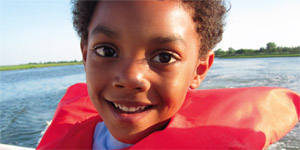Family Life
4 min Read
Does your child’s motion sickness hamper your travel plans? Check out our tips

July 7, 2015
Family Life
4 min Read

July 7, 2015


If your summer getaway features a plane, train or automobile, you may find yourself coming face-to-face with a messy problem – motion sickness. Going on a long car trip was a struggle for Suzanne McKay’s family. Her daughter, Katherine began showing signs of motion sickness when she was two years old. “Her motion sickness always occurred in the car during drives over a half hour long,” recalls Suzanne. “She would complain of nausea, so we’d have to pull over to let her get out and walk around and about 50 percent of the time, she’d vomit,” says Suzanne.
Calgary pediatrician Janice Heard says children between the ages of three and a half and 12 are more susceptible to motion sickness than adults simply because their senses haven’t fully developed. Motion sickness is caused by the brain receiving conflicting information from the motion-sensing parts of the body – the eyes, inner ears, skin sensors and sensors in muscles and joints. While the eyes and ears sense motion when we’re in a car, or on a boat, other parts of our bodies (mainly the nerves in our legs while we’re sitting) are staying still, causing the brain to become confused and the symptoms of motion sickness to develop.
Mild symptoms may include headaches, loss of appetite, feeling nauseous or dizzy. In the worst cases, children may vomit and may even report feeling very anxious. “They may be sweaty or pale or may even be drooling,” says Dr. Heard. These symptoms tend to disappear in adolescence as the brain develops and gets used to being in a moving object. Here’s how to control your little one’s motion sickness on your travels:
Still battling motion sickness? Give these treatments a try.
Take medication
Gravol or other antispasmodics can help alleviate motion sickness. In part, they may help because they can make kids drowsy. “Sleeping in a car, plane or on a boat is probably one of the best ways you can avoid sickness,” says Calgary pediatrician Janice Heard. If it’s your child’s first time using medication, keep an eye out for adverse reactions. Some have been known to cause hyperactivity in some children.
Eat some ginger
Chewing on ginger root or taking ginger capsules may help control motion sickness. A carbonated beverage such as ginger ale can also help to settle the stomach.
Avoid fatty foods
Ditch the donuts and bagels before a long car trip. Dr. Heard says fatty meals can contribute to motion sickness. Opt instead for a high-protein meal that includes chicken or meat.
Originally published in ParentsCanada magazine, July/August 2015.